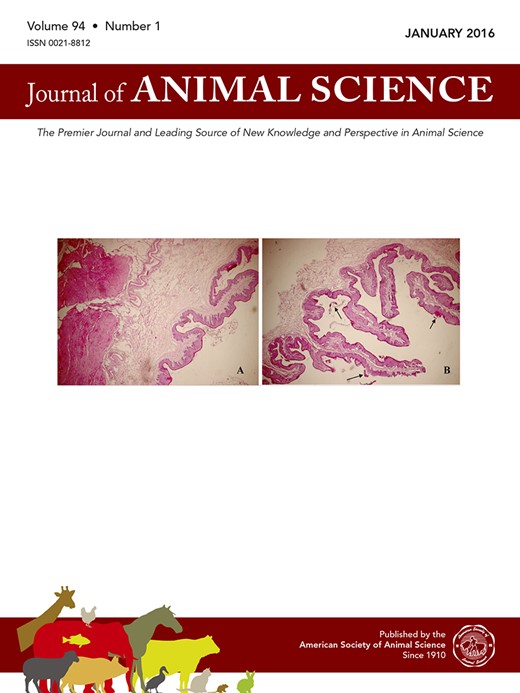-
Views
-
Cite
Cite
R. Muns, J. Malmkvist, M. L. V. Larsen, D. Sørensen, L. J. Pedersen, High environmental temperature around farrowing induced heat stress in crated sows, Journal of Animal Science, Volume 94, Issue 1, January 2016, Pages 377–384, https://doi.org/10.2527/jas.2015-9623
Close - Share Icon Share
Abstract
The aim of the experiment was to study the impact of high ambient temperature (25°C) around farrowing on crated sows unable to perform thermoregulatory behavior. Twenty sows were housed in 2 farrowing rooms in conventional farrowing crates. In 1 room (CONTROL) temperature was kept at 20°C. In the other room (HEAT) temperature was initially kept at 20°C and gradually raised until it reached 25°C from d 112 to 115 of gestation. Then the temperature was gradually lowered to 20°C. Sows were continuously video recorded for behavior recording. Sows' respiration rates were recorded from d 3 before farrowing to d 5 after farrowing. Sows' rectal temperatures were recorded from d 1 before farrowing to d 8 after farrowing, and sows' udder surface temperatures were recorded from the day of farrowing to d 3 after farrowing. All measures were recorded daily. Sows' BW were recorded at d 108 of gestation and at weaning. Sows' back fat was recorded on farrowing day, when room temperature was set again at 20°C, and at weaning. Piglets were weighed at d 1, 14, and 21. The HEAT sows spent a higher proportion of time lying in the lateral position than CONTROL sows, both during the 16 h before farrowing and the 24 h after the start of farrowing (P < 0.05), but with no difference in the amount of time spent lying down between groups (P > 0.10). The HEAT sows had higher rectal temperature on d 1 after farrowing (P < 0.05) and had udder surface temperature 0.9°C higher than that of CONTROL sows during the recording period (P < 0.05). The HEAT sows also tended to have longer farrowing duration (P < 0.10). Respiration rate was higher in HEAT sows on d 1 before farrowing and on the day of farrowing. On d 7, 8, and 9, CONTROL sows had higher feed intake (P < 0.05), and piglets from CONTROL sows were heavier at d 21 after farrowing (P < 0.05). High ambient temperature around farrowing altered sows' postural behavior. Sows reacted to the thermal challenge with higher respiration rate around farrowing, but both their rectal and udder temperatures were elevated, indicating that they were not able to compensate for the higher ambient temperature. High ambient temperature negatively influenced sows' feed intake, with negative impact on piglets' weaning weight. High temperatures around farrowing (25°C) compromise crated sows' welfare, with a potential negative impact on offspring performance.





